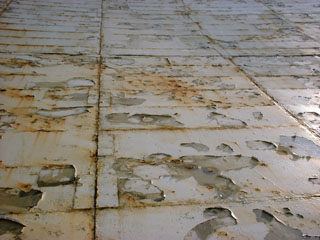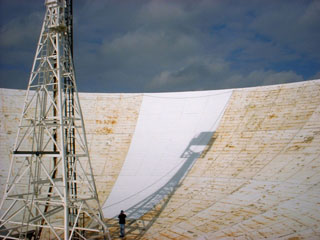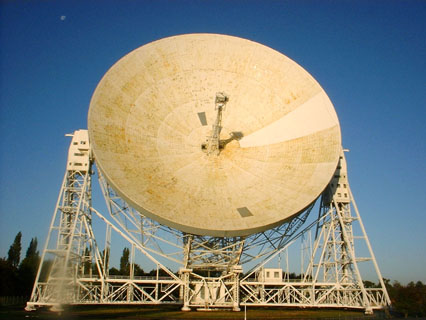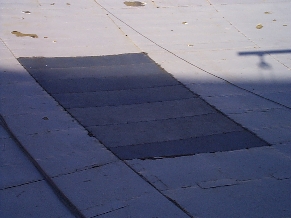Resurfacing the Lovell Telescope
Over the summers of 2001 & 2002 it is planned that the surface of the 76m Lovell Radio Telescope will be replaced as the present surface is not in good condition.


A close up of the surface and as seen from within the bowl (March 2001)
Credit: A.Holloway, University of Manchester
The original steel surface of each of the several hundred panels that make up the surface will be replaced with a new surface made from galvanised steel. This must be used, rather than aluminium, in order that the part of the telescope that rotates in elevation - the bowl structure - remains in balance.
The expectation is that this will provide a substantial increase in the highest operating frequency of the telescope and, in particular, make it fully efficient at 5 Ghz which would allow the Lovell Telescope to make a major new contribution to MERLIN. Its use at 5Ghz would almost double the sensitivity of MERLIN at that frequency!
The improved performance would come from three improvements:
- The individual panel surfaces would be smoother than the present panels.
- The shape of some of the panel formers which define the surface shape of each panel can be improved helping to ensure that each panel shape correspond to the appropriate section of the parabolic surface.
- By the use of a holographic technique using observations made simultaneously by the Lovell and MkII telescopes, it is possible to measure the offset of each panel from the desired parabolic surface. Each individual panel can then be adjusted to bring the whole surface to the desired parabolic shape. The surface is set at an appropriate elevation so that the performance is maximised over the greatest possible range of elevations.
During the summer of 1988, the surface of three trial panels were replaced to help establish an appropriate system for the removal of the original skin and its replacement. Telescope Workshop staff have built moveable platform to allow the panels furthest from the centre, where the slope is greatest, to be worked on.
During the summer of 1999 a complete segment of the surface was replaced to confirm the techniques to be used on the whole surface replacement. This is clearly visible as the white sector on the righthand side of the first image.




